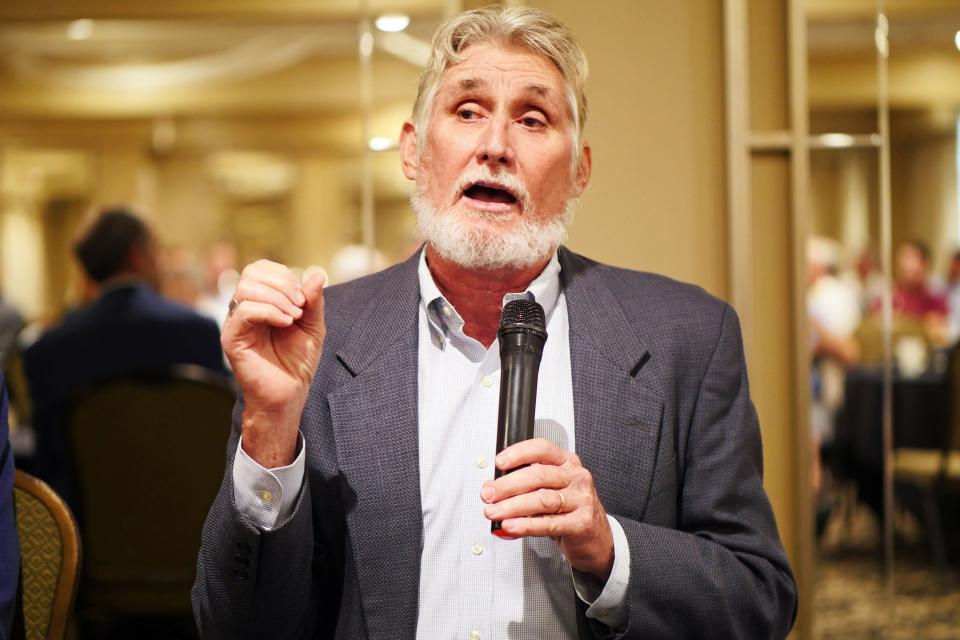SEIDMAN SAYS: Live Local Act won't solve Sarasota’s affordable housing crisis
There’s been a lot of buzz about the Florida’s Live Local Act that went into effect July 1, centered on how the Legislature’s attempt to address a statewide affordable housing crisis will translate to further development impacts in Sarasota.
The new legislation uses a combination of state funding, tax credits, tax exemptions and land use controls to incentivize the development of affordable housing, while preempting local municipalities’ control over approval of such projects. In exchange for the creation of affordable units, SB102 promises developers maximum heights and densities, release from zoning rules and an expedited process through local government, without opportunity for public comment.

In Sarasota, where in recent years many residents have begun to push back on what they consider an unbridled growth that is straining local infrastructure and undermining quality of life, the act has prompted alarm and anxiety, and bred a plethora of rumors. Among those that have reached my inbox: That St. Armand’s could become a ring of Plymouth Harbor-height buildings; that single family homes in humble residential neighborhoods like Bayou Oaks could butt up against 18-story skyscrapers; and that affordable developments on the North Trail, along a transit line, could be approved with little to no on-site parking.
More: SEIDMAN SAYS: Siesta Promenade development threatens neighborhood intrusion - again
None of these are reality, but a community primed for defensiveness leaps to worst case scenarios. And Sarasota residents have certainly been primed.
At this point, you’d be hard-pressed to find anyone who doesn’t see the creation of housing for the lower-income workforce needed to serve Sarasota’s burgeoning population of wealthy residents as a top priority. But whether Live Local will actually create those affordable units – and at what cost to the local government and residents – remains to be seen.
Jon Thaxton, senior vice president for community leadership at the Gulf Coast Community Foundation and a member of the county’s affordable housing advisory committee task force, says those questions – and the lack of clear answers to them – exist for a good reason: the 55-page Live Local act is “a very complicated piece of legislation.”
“I’m still struggling to get my arms around all the nuances,” says Thaxton, a Sarasota native with expertise in public policy. “The best way I can describe it is that it is a step forward for the creation of affordable housing – with numerous opportunities for unintended consequences.”

With the up to $811 million in funding the state has made available in 2023-24 in tax credits and for its affordable housing programs (SHIP and SAIL), it will be more financially feasible for a developer to create meaningful numbers of affordable units. But with the average price of building an affordable rental unit now hovering close to $300,000, Thaxton says the funding “will help, but it will not be enough of enticement to solve the problem."
At a recent Sarasota City Commission workshop, both deputy city manager Michael Connelly and city planner Steven Cover said they seriously doubted Live Local would lead to new high rises in the downtown area or the city core. At a recent conference of the Florida Municipal Attorneys Association, Connelly said the consensus was that heights over five to six stories would be cost prohibitive and Cover said a local real estate expert called large-scale affordable development in the downtown area “very unlikely” due to the expense of land purchase.
Affordable developers are more likely to look at the city outskirts – the North and South Trail or lower-income neighborhoods like Newtown or Park East – especially those along major transit lines, a location for which the act provides possibilities for reduced parking requirements.
More concerning, Thaxton believes, is the “chilling effect” the act could have on local government’s amendments to zoning ordinances and comprehensive plans by preempting the ultimate discretion over land use decisions.
“Every local government needs to look at this act and all its implication before they make land use ordinance changes, because [in the future] even if it’s not the same property or in the same district, it could still be governed by Live Local,” Thaxton says.
“So what elected officials and the community thought they were adopting is not actually what could potentially happen. Those are the unintended consequences I’m referring to.”
Because the legislation is so complex and has already raised so many questions, it’s likely to provoke legal challenges and require revisions during next year’s legislative session. That could help either help clarify its nuances and applications or, conversely, erode its good intentions with, for example, amendments to appease developers who may say only greater incentives will make affordable development possible.
We won’t really be able to gauge the impact of Live Local for at least a couple of years, but one thing is predictable regardless of its effect: It alone will not be enough to solve Sarasota’s affordable housing crisis.
If we continue to green-light high-end upscale developments that increase the need for service workers – projects like Wellen Park, whose 50,000 new residents have been promised a “concierge” lifestyle – and exacerbate an existing income disparity that prioritizes market rate development, our need for a larger service workforce will continue to exceed our ability to provide them with contiguous housing.
“Until we look at that equation, it’s mathematically impossible to get ahead of the affordable housing crisis,” Thaxton says. “The Live Local Act is not a silver bullet, but I’d say that about every affordable housing option. It’s a comprehensive mixture between the public sector and the private sector – and a little pain across the board – that will bring affordable housing and reduce this discrepancy between supply and demand.
“Do not think for one moment in the most remote sense of the thought process that we’re done," Thaxton warns. "This is barely a beginning.”
Contact Carrie Seidman at carrie.seidman@gmail.com or 505-238-0392.
This article originally appeared on Sarasota Herald-Tribune: Sarasota's affordable housing crisis won't be solved with quick fixes

